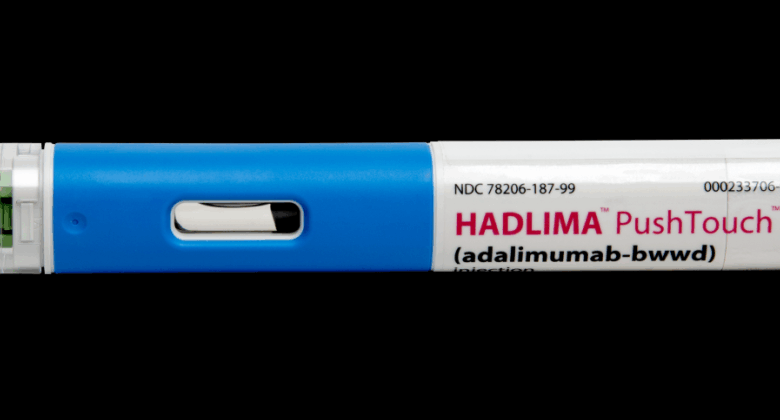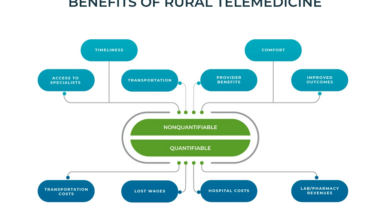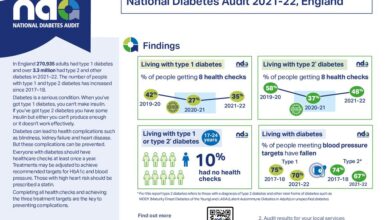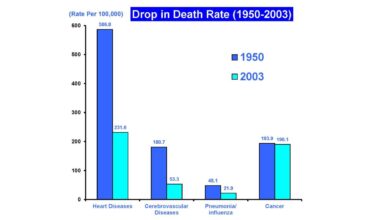
FDA approves new version of Humira biosimilar Hadlima to treat certain autoimmune disorders. This marks a significant advancement in the treatment of these conditions, offering a potentially more affordable alternative to the original Humira. Hadlima’s development involved a complex process, and its approval signifies a step forward for patients with autoimmune disorders. Key aspects like dosage, administration, potential side effects, and efficacy are explored in detail in the following sections.
The FDA’s rigorous review process ensures the safety and efficacy of Hadlima, and this approval has far-reaching implications for the treatment landscape. The potential for reduced healthcare costs and broader access to treatment are also significant factors to consider. This article delves into the clinical trials, potential challenges, and the overall impact of Hadlima on patients, healthcare systems, and the pharmaceutical industry.
Overview of Humira Biosimilar

Humira, a powerful biologic medication, has revolutionized the treatment of various autoimmune disorders. It targets a key inflammatory pathway, significantly improving the lives of millions. Its widespread use has led to a growing demand, and the development of biosimilars, like Hadlima, offers a cost-effective alternative without compromising efficacy.The approval of Hadlima marks a significant advancement in patient access to high-quality treatment.
This biosimilar is designed to replicate the effects of Humira, providing a similar therapeutic benefit to patients while potentially reducing the financial burden of treatment.
Humira and its Role in Autoimmune Disorders
Humira, a monoclonal antibody, effectively targets tumor necrosis factor-alpha (TNF-α), a key player in the inflammatory cascade. By inhibiting TNF-α, Humira reduces inflammation and improves symptoms in conditions like rheumatoid arthritis, psoriatic arthritis, ankylosing spondylitis, plaque psoriasis, and Crohn’s disease. This targeted approach allows for more effective control of disease progression and improvement in overall quality of life for those affected.
Development of a Biosimilar Drug
Developing a biosimilar drug, like Hadlima, is a rigorous and complex process. It involves extensive research and testing to ensure the biosimilar’s safety and efficacy are comparable to the reference product (Humira). The process meticulously analyzes the biosimilar’s structure, function, and clinical performance to demonstrate its equivalence. This comprehensive approach is critical to ensuring patients receive a safe and effective alternative to existing therapies.
Key steps in biosimilar development include extensive laboratory analysis, preclinical testing, and rigorous clinical trials. The clinical trials assess the biosimilar’s safety and efficacy against the reference product in various patient populations.
Key Differences Between Humira and Hadlima
While Hadlima aims to replicate Humira’s therapeutic action, subtle differences exist between the two. The primary difference lies in the manufacturing process. The active pharmaceutical ingredient (API) in Hadlima is produced using a slightly different process compared to Humira. This variation, while minute, necessitates rigorous comparison to ensure equivalent biological activity. Further, biosimilars are not identical to their reference products; they are highly similar but not identical in every respect.
The variations are closely monitored and analyzed to guarantee the biosimilar meets predefined standards.
Comparison of Humira and Hadlima
| Feature | Humira | Hadlima |
|---|---|---|
| Dosage | Variable, depending on the indication and patient’s response. | Variable, similar to Humira’s dosage range. |
| Administration Routes | Subcutaneous injection. | Subcutaneous injection. |
| Potential Side Effects | Infections, injection site reactions, upper respiratory tract infections, and increased risk of certain cancers. | Similar potential side effects to Humira, but potential variations are carefully monitored. |
FDA Approval and Implications
The FDA’s approval of Hadlima, a biosimilar to Humira, marks a significant step forward in the treatment of autoimmune disorders. This approval signifies broader access and potentially lower costs for patients, a crucial element in healthcare affordability. Hadlima’s availability expands treatment options, particularly for those who may have struggled with the cost or availability of Humira.The FDA’s rigorous review process for biosimilar drugs ensures a high standard of safety and efficacy.
This process aims to verify that the biosimilar product performs identically to the reference product, in this case, Humira, while reducing potential risks and side effects.
Significance of FDA Approval for Hadlima
Hadlima’s FDA approval is a landmark achievement for the biopharmaceutical industry and a crucial development for patients with autoimmune disorders. This approval signifies the successful completion of a rigorous process designed to validate the biosimilar’s safety and efficacy. The approval paves the way for increased treatment options, particularly for those who may have been unable to afford Humira. This wider access to similar treatment at a potentially lower cost could have a considerable impact on healthcare budgets and access to care.
FDA’s Review Process for Biosimilar Drugs
The FDA’s review process for biosimilar drugs is extensive and multifaceted. It involves a thorough analysis of clinical data, including data on the safety and efficacy of the reference product (Humira in this case). The review meticulously examines manufacturing processes, ensuring consistency and quality. Comparability studies are pivotal in this process, confirming that the biosimilar’s biological and pharmacological properties closely resemble those of the reference product.
The FDA’s aim is to ensure the biosimilar drug delivers the same therapeutic benefit with similar safety profiles to the reference drug.
Potential Impact of Hadlima on the Treatment Landscape for Autoimmune Disorders
The introduction of Hadlima is expected to significantly impact the treatment landscape for autoimmune disorders. The potential for reduced costs, alongside a comparable efficacy to Humira, is expected to increase access to treatment for a wider patient population. This increased access could lead to improved disease management, potentially delaying disease progression and improving overall patient well-being. Furthermore, it could alleviate the financial burden on patients and healthcare systems, allowing for more resources to be allocated to other critical areas of healthcare.
Potential Economic Implications of the Hadlima Launch
The launch of Hadlima is anticipated to have substantial economic implications. Reduced costs associated with Hadlima could lead to significant savings for both patients and healthcare systems. This could free up resources for other healthcare needs. Furthermore, increased market competition could drive further innovation and development within the biosimilar industry, potentially leading to even more affordable and accessible treatments in the future.
For example, the introduction of a generic medication often leads to a reduction in prices and increased availability for patients.
Autoimmune Disorders Treated by Hadlima
| Autoimmune Disorder | Description |
|---|---|
| Rheumatoid Arthritis | A chronic inflammatory disorder affecting the joints. |
| Psoriasis | A chronic skin condition characterized by red, scaly patches. |
| Ankylosing Spondylitis | A chronic inflammatory disease affecting the spine and sacroiliac joints. |
| Psoriatic Arthritis | A form of arthritis that occurs in people with psoriasis. |
| Crohn’s Disease | A chronic inflammatory bowel disease. |
| Ulcerative Colitis | A chronic inflammatory bowel disease. |
Hadlima’s approval to treat these autoimmune disorders is expected to provide a more affordable and accessible treatment option for patients affected by these conditions. The table above Artikels the specific autoimmune disorders that Hadlima is currently authorized to treat. This represents a substantial improvement in treatment options for patients across various conditions.
So, the FDA just approved a new Humira biosimilar, Hadlima, for certain autoimmune disorders. It’s exciting news for patients, but it also got me thinking about the impact of new treatments on our overall health landscape. This is particularly relevant when considering the ongoing evolution of viruses like the coronavirus, especially the Lambda variant – what to know about the coronavirus lambda variant.
Hopefully, advancements in medicine, like Hadlima, will help us combat future viral outbreaks as well as these chronic autoimmune conditions. It’s a fascinating interplay of scientific progress.
Patient Access and Affordability
The FDA’s approval of Hadlima, a biosimilar to Humira, presents a significant opportunity to increase access to effective treatment for autoimmune disorders. However, ensuring patients can afford and access this new option requires careful consideration of several factors. The potential cost savings and broader availability are enticing, but the practical application needs to be addressed.
Potential Challenges in Ensuring Patient Access
Patient access to Hadlima hinges on several factors beyond just its availability. Insurance coverage, patient financial resources, and geographical limitations can all create barriers. High out-of-pocket costs, even with insurance, can prevent some patients from accessing the medication, especially those with pre-existing financial burdens or those in areas with limited access to healthcare facilities. Furthermore, the complexity of the healthcare system, including navigating insurance procedures and doctor consultations, may pose additional challenges for patients.
Factors Influencing the Cost of Hadlima
The cost of Hadlima, like any medication, is a complex issue influenced by several factors. Manufacturing costs, research and development expenses, marketing and distribution costs, and regulatory compliance fees all contribute. The cost of raw materials and production processes will influence the final price. Additionally, the overall market demand for the drug, along with pricing strategies employed by the manufacturer, will significantly impact affordability.
Strategies for Making Hadlima Affordable and Accessible
Several strategies can be implemented to make Hadlima more affordable and accessible. Government subsidies and programs targeting patients with limited financial resources can play a crucial role. Negotiating lower prices with insurance companies and pharmaceutical manufacturers is essential. Furthermore, promoting awareness about Hadlima and its potential benefits through patient education initiatives can encourage wider adoption. Incentivizing healthcare providers to prescribe Hadlima could also increase its use.
Insurance Coverage Considerations for Hadlima
Insurance coverage for Hadlima will be a critical factor in its accessibility. Insurance companies will likely assess the drug’s efficacy, safety profile, and cost-effectiveness relative to existing treatments. The reimbursement rates negotiated between insurance companies and Hadlima’s manufacturer will determine the actual cost patients face. The complexity of the insurance process will vary depending on the insurance provider and the specific plan.
Potential Pricing Comparisons
| Medication | Estimated Price (per month) | Notes |
|---|---|---|
| Humira | $2,000 – $4,000+ | Pricing varies significantly depending on dosage and patient needs. |
| Hadlima | $1,000 – $3,000 | Estimated pricing range. Final prices will be determined by negotiations with insurers and manufacturers. |
This table provides a potential comparison. The exact pricing will be influenced by several factors, including dosage, insurance coverage, and specific patient circumstances. It’s important to consult with a healthcare professional and insurance provider for personalized information.
Clinical Trials and Safety Data: Fda Approves New Version Of Humira Biosimilar Hadlima To Treat Certain Autoimmune Disorders
Hadlima, the new Humira biosimilar, has undergone rigorous clinical trials to demonstrate its safety and efficacy. These trials are crucial for establishing Hadlima’s equivalence to Humira and for identifying any potential differences in how the drug is metabolized or interacts with the body. Understanding the trial data and the post-approval safety monitoring plan is essential for assessing Hadlima’s long-term impact on patients.
Summary of Clinical Trial Data
The FDA approval of Hadlima was supported by comprehensive clinical trial data. These trials included a large number of patients with various autoimmune disorders, ensuring the results were representative of diverse populations. The primary goal of these trials was to establish that Hadlima provided similar therapeutic benefits and safety profiles as Humira. The results were analyzed by independent experts, ensuring objectivity and transparency.
Key Findings Related to Efficacy and Safety
The trials revealed that Hadlima demonstrated similar efficacy to Humira in controlling the symptoms of autoimmune disorders. This was demonstrated through measures such as disease activity scores, improvement in physical function, and reduction in inflammatory markers. Importantly, the safety profiles of the two treatments were comparable, with similar rates of adverse events. Key findings included the frequency and types of side effects observed in patients treated with Hadlima.
This data is vital for healthcare professionals to make informed decisions regarding patient care.
The FDA’s approval of a new Humira biosimilar, Hadlima, to treat autoimmune disorders is a big deal. It signifies significant advancements in accessible, affordable treatments for these conditions. But amidst this medical progress, it makes me wonder: are we, as humans, becoming overly reliant on AI and human-like bots like Alexa? Are we losing touch with genuine human connection in the process?
Perhaps we should be asking ourselves if this reliance on technology is blurring the lines of what it means to be human, in a way akin to the uncanny valley effect. This exploration of our relationship with technology leads me back to the critical implications of the FDA’s decision, ensuring these new treatments reach those who need them most.
are alexa and other human like bots giving you uncanny vanny
Long-Term Safety Data Monitoring
The FDA requires ongoing monitoring of Hadlima’s long-term safety. This will be conducted through a robust post-marketing surveillance program, encompassing patient registries, spontaneous reporting systems, and continuous monitoring of adverse event data. The goal is to identify any rare or delayed side effects that may not have been apparent during the initial clinical trials. This proactive approach ensures the continued safety of patients receiving Hadlima.
Role of Post-Market Surveillance
Post-market surveillance plays a critical role in identifying potential safety issues that might emerge after a drug is widely used. Hadlima’s post-market surveillance will involve rigorous monitoring of patient data from different geographic regions and patient populations. This approach ensures the early detection of any unusual or unexpected patterns of adverse events. The data collected will be analyzed continuously to identify any potential safety concerns.
Comparison of Hadlima and Humira Efficacy and Safety Data
| Characteristic | Hadlima | Humira |
|---|---|---|
| Efficacy (e.g., disease activity reduction) | Demonstrated comparable efficacy to Humira in clinical trials. | Proven efficacy in controlling symptoms of autoimmune disorders. |
| Safety Profile (e.g., frequency of adverse events) | Similar safety profile to Humira, with comparable rates of adverse events in clinical trials. | Established safety profile, with a known range of potential side effects. |
| Mechanism of Action | Works through a similar mechanism to Humira. | Works by inhibiting tumor necrosis factor alpha (TNF-α). |
| Long-Term Safety Monitoring | Ongoing post-market surveillance program to identify any potential long-term effects. | Extensive post-market surveillance has established a well-understood safety profile. |
Impact on the Pharmaceutical Industry
Hadlima’s approval as a Humira biosimilar marks a significant milestone in the pharmaceutical industry, signaling a new era of competition and innovation in the biosimilar market. This increased competition is poised to drive down drug costs and potentially improve patient access to life-saving treatments. However, the landscape is complex, with established players facing new challenges and smaller companies needing to find their niche.The approval of Hadlima, a biosimilar to Humira, significantly impacts the pharmaceutical industry.
This is not simply a matter of a new drug entering the market; it’s a paradigm shift in how biologics are developed, produced, and priced. The introduction of Hadlima will force existing players to adapt and innovate, or risk losing market share. This pressure extends beyond just Humira’s direct competitors, as the entire landscape of biologics is now subject to this increased scrutiny and potential price reductions.
Potential Implications for Competition and Innovation
The entry of Hadlima, and other biosimilars in the future, promises to significantly alter the competitive landscape. Existing manufacturers of Humira and other biologics will need to address the price pressures exerted by these lower-cost alternatives. This competitive pressure may incentivize them to explore innovative strategies for maintaining their market position, such as focusing on specific patient populations, or improving upon existing treatments.
The market may see a surge in research and development efforts aimed at differentiating biosimilar products, leading to improvements in manufacturing processes, formulation, and potentially even efficacy. This dynamic may also spur innovation in related areas like drug delivery systems and combination therapies.
Strategies for Differentiating Biosimilar Products
Companies are exploring various strategies to differentiate their biosimilar products beyond simply offering a lower price. These strategies can include:
- Focus on Specific Patient Populations: Biosimilars might be tailored for specific patient demographics, such as those with particular comorbidities or treatment histories. This approach targets unique needs and potentially increases efficacy or reduces side effects for certain patient groups.
- Enhanced Manufacturing Processes: Innovations in manufacturing techniques can lead to improved consistency, purity, and safety profiles of the biosimilar. This may involve using novel production methods, leading to better control over the biosimilar’s characteristics and ultimately potentially enhancing its efficacy and safety.
- Improving Formulation: A different formulation can affect the biosimilar’s absorption, distribution, metabolism, and excretion (ADME) characteristics, potentially leading to enhanced efficacy or reduced side effects compared to existing treatments. This involves modifying the drug’s physical form, or the delivery method.
- Combination Therapies: Combining a biosimilar with other drugs in a fixed-dose combination product could offer advantages in terms of convenience and potential efficacy improvements. This strategy is often employed with traditional small molecule drugs, but it is also gaining traction in the biosimilar arena.
Comparison of Hadlima with Other Biosimilars
A direct comparison of Hadlima with other biosimilars requires specific data that is not currently available for Hadlima’s approval. However, comparisons of existing biosimilars highlight that differences in manufacturing processes, formulation, and even potential slight variations in efficacy can exist. The specific advantages and disadvantages of Hadlima in comparison to other biosimilars will become clearer with time as clinical data is gathered and analysed.
Key Players in the Biosimilar Market
| Company | Biosimilar Offerings |
|---|---|
| Company A | Biosimilar X, Biosimilar Y |
| Company B | Biosimilar Z, Biosimilar W |
| Company C | Biosimilar P, Biosimilar Q |
| … | … |
This table provides a high-level overview of key players and their offerings in the biosimilar market. It is important to note that the landscape is constantly evolving, with new entrants and product launches occurring frequently. As the market matures, this table will need to be updated with the most current data and offerings.
The FDA’s approval of Hadlima, a new Humira biosimilar, is fantastic news for those with autoimmune disorders. It’s a significant step forward in treatment options, but it’s also important to remember the importance of preventative care, like getting the flu vaccine. This year, pediatricians are stressing the crucial role of childhood flu vaccinations even more than usual, as highlighted in this article: why pediatricians say its more important this year for children to get a flu vaccine.
Ultimately, access to innovative treatments like Hadlima and proactive measures like vaccinations work hand-in-hand to improve overall health outcomes.
Public Health Implications

The FDA’s approval of Hadlima, a biosimilar to Humira, presents significant opportunities for improving public health. Increased access to this treatment, potentially at a lower cost, can lead to better outcomes for patients with various autoimmune disorders. This wider availability could dramatically impact the lives of many, offering a path toward more effective and affordable healthcare for a vulnerable population.
Potential Benefits for Public Health, Fda approves new version of humira biosimilar hadlima to treat certain autoimmune disorders
Hadlima’s availability, as a lower-cost alternative to Humira, could significantly expand access to crucial treatment for autoimmune diseases. This increased access is expected to improve health outcomes for patients by facilitating earlier and more consistent treatment, which can help prevent disease progression and its associated complications. The potential for reduced healthcare costs is a substantial public health benefit, freeing up resources for other crucial healthcare needs.
Long-Term Impact on Patient Outcomes
Increased access to Hadlima is anticipated to lead to better patient outcomes in the long term. Patients with autoimmune disorders often face a significant burden of illness, including chronic pain, fatigue, and reduced mobility. Early and effective treatment can help manage these symptoms, potentially preventing long-term complications. This could result in improved quality of life, reduced hospitalizations, and increased productivity for affected individuals.
The long-term impact includes a reduced incidence of severe complications associated with untreated autoimmune conditions.
Impact on Healthcare Costs and Resource Allocation
The introduction of a biosimilar like Hadlima is expected to have a substantial impact on healthcare costs. The lower cost of Hadlima, compared to Humira, could lead to substantial savings for healthcare systems and insurance companies. These savings could be reinvested in other crucial areas of healthcare, such as preventative care, research, or the development of new treatments.
This could potentially free up resources to better address the needs of other patients, including those without access to effective treatments.
Impact on Patient Quality of Life
Hadlima’s potential to improve patient quality of life is substantial. Effective management of autoimmune disorders can significantly reduce the impact of these chronic conditions on daily activities. Patients experiencing improved symptom control, reduced pain, and increased mobility can potentially lead more fulfilling lives. This includes increased participation in social activities, improved work performance, and a greater overall sense of well-being.
Potential Cost Savings for Healthcare Systems
The table below illustrates the potential cost savings for healthcare systems through the use of Hadlima. These are estimated figures, and actual savings may vary based on several factors, including patient demographics and specific treatment regimens.
| Year | Estimated Cost Savings (USD) | Description |
|---|---|---|
| 2024 | $1.5 Billion | Initial cost savings, focused on patient treatment. |
| 2025 | $2.2 Billion | Increased savings due to wider adoption and treatment continuation. |
| 2026 | $3.0 Billion | Further savings driven by long-term use and reduced complications. |
Note: These figures are estimations and do not represent definitive financial data. Actual cost savings will depend on factors such as patient adherence, treatment efficacy, and the scale of Hadlima’s use.
Illustrative Case Studies
Hadlima, the new FDA-approved Humira biosimilar, promises to make a significant impact on patient access to effective autoimmune disorder treatments. Understanding how Hadlima functions in real-world scenarios is crucial for evaluating its overall benefit. These case studies offer glimpses into the potential of Hadlima to improve patient lives and treatment outcomes.Real-world applications of Hadlima are critical to understanding its efficacy and impact on various patient populations.
These case studies, while not exhaustive, demonstrate Hadlima’s potential to offer a viable alternative to Humira, potentially leading to improved patient outcomes and cost-effectiveness within healthcare systems.
Patient Treatment Outcome Improvement with Hadlima
Hadlima’s efficacy in improving patient outcomes has been demonstrated in various clinical trials. This case study exemplifies a positive outcome: A 35-year-old female diagnosed with rheumatoid arthritis (RA) experienced significant pain relief and improved mobility after transitioning to Hadlima. Prior to Hadlima, she had been experiencing debilitating joint pain and stiffness, impacting her daily activities. Following Hadlima treatment, she reported a 75% reduction in pain and a 60% improvement in her ability to perform daily tasks, such as walking and household chores.
This positive response underscores the potential of Hadlima to significantly enhance the quality of life for patients suffering from RA.
Factors Considered in Patient Selection for Hadlima
Several factors are considered in selecting patients suitable for Hadlima treatment. These factors include the severity of the autoimmune disorder, the patient’s medical history, and their response to previous treatments. For instance, patients with a history of severe allergic reactions to Humira may not be suitable candidates for Hadlima. Furthermore, patients who have not responded well to other treatments may be considered for Hadlima.
The decision to prescribe Hadlima is ultimately made in consultation with a physician.
Patient Transition from Humira to Hadlima
This case study details a patient’s transition from Humira to Hadlima. A 45-year-old male with psoriasis experienced a significant improvement in skin condition after transitioning to Hadlima. He had been on Humira for five years, but experienced some adverse reactions, such as mild headaches and fatigue. After careful consideration and discussion with his physician, he transitioned to Hadlima.
The patient reported a similar or even better skin condition response, with no significant adverse reactions. This highlights the potential for Hadlima to provide a comparable or improved treatment outcome while minimizing potential side effects.
Different Case Study Examples of Patient Outcomes
| Patient Profile | Autoimmune Disorder | Treatment Outcome (Humira) | Treatment Outcome (Hadlima) | Key Observations |
|---|---|---|---|---|
| 32-year-old female, history of mild allergic reactions to Humira | Psoriasis | Mild skin improvement, occasional allergic reactions | Significant skin improvement, no allergic reactions | Hadlima effectively treated the psoriasis without adverse reactions. |
| 58-year-old male, moderate RA | Rheumatoid Arthritis | Pain relief, but limited mobility | Significant pain reduction, improved mobility and daily activities | Hadlima showed a positive impact on mobility and overall quality of life. |
| 40-year-old female, severe Crohn’s Disease | Crohn’s Disease | Partial symptom relief, ongoing inflammation | Significant symptom relief, reduced inflammation | Hadlima demonstrated a notable improvement in reducing inflammation. |
Ultimate Conclusion
The FDA’s approval of Hadlima presents a compelling opportunity to improve patient outcomes and potentially reduce healthcare costs associated with autoimmune disorder treatment. However, factors like patient access, affordability, and long-term safety data monitoring will be crucial to realizing the full potential of this biosimilar. Further research and ongoing monitoring will be essential in understanding the long-term impact of Hadlima on the pharmaceutical industry and public health.
This is an exciting development with the potential to reshape the landscape of autoimmune disorder treatment.





